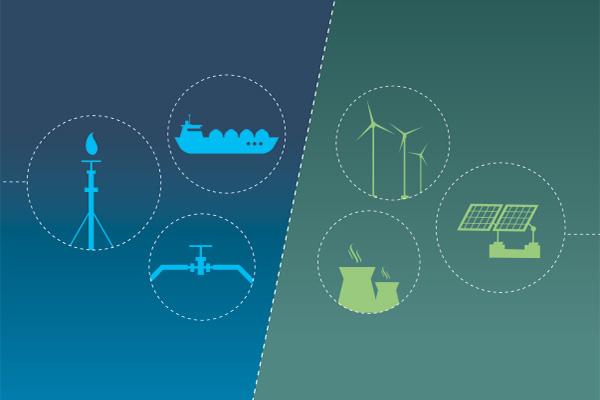
Russia’s weaponisation of its gas exports to Europe was the dominant element on EU gas markets from July to September 2022, according to the European Commission’s latest quarterly gas market report published today. The report highlights how Russia continued to squeeze the European gas market by gradually turning down the gas volumes shipped via the Nord Stream 1 pipeline, implying falling supply of Russian pipeline gas amid the height of the storage-refilling season. This propelled wholesale gas prices above 300 €/MWh by the end of August. It also had a massive impact on the electricity market as the high and volatile gas prices served as marginal fuel used in the price setting of EU wholesale electricity prices, causing significant increases across the EU with price levels reaching new unprecedented highs in Q3 2022, as confirmed in the new quarterly electricity market report.
Q3 2022 gas market report
The gas report outlines how Russian gas imports fell measurably in the third quarter of 2022 and beyond. Russian pipeline gas imports from July to September were down by 74% relative to the same period in 2021 (though Belarus by 96%, via Nord Stream 1 by 85%, through Ukraine by 63%, only increasing via the Turk Stream, by 21%). It recalls that Nord Stream 1 definitively terminated its operations in September as a result of sabotage. Provisional figures for January-November 2022 show Russian pipeline gas imports in the EU fell by 69 bcm year-on-year - and even allowing for increased LNG imports, total gas imports from Russia fell by 64 bcm.
To contrast with the dramatic fall in Russian supplies, EU LNG imports were up by a staggering 89% in the third quarter - amounting to 32 bcm. In most of 2022, gas hub prices in Europe developed a premium compared to the Asian markets, giving strong incentives to send LNG cargoes to Europe. Much of this increase was due to higher volumes from the US. Indeed provisional figures for January-November 2022 put the EU’s LNG imports from the US at 52 bcm, compared to 22 bcm in the whole of 2021.
EU gas consumption in the third quarter fell by 8%, (-5.1 bcm) year-on-year, amounting to 59 bcm. On the other hand, gas demand in electricity generation rose by 13% (+15 TWh) compared to the same period in 2021. Increasing gas prices led to a virtual collapse in demand in some energy-intensive industries. Overall EU gas imports rose by 2% in the same period, while production fell further by 9%. The EU spent an estimated €101 billion on gas imports in the quarter - - the highest in the last decade. One important marker though, spurred on by new EU rules, the EU average gas storage filling rate reached 89% by the end of September, some 14 percentage points higher than in 2021 on the same day. The impact of other emergency measures – such as gas demand reduction and the Market Correction Mechanism – are likely to be more apparent in the final quarter of 2022 and in 2023.
It is also worth noting a number of new gas infrastructure projects came online in the course of the period. These include the gas interconnector between Greece and Bulgaria, the Polish-Slovak gas interconnector, the Baltic pipe, delivering gas from Norway, and a new floating LNG terminal in Eemshaven in the Netherlands. These new infrastructure projects will all contribute to the EU’s security of gas supply and to replacing Russian pipeline gas, well aligned with the objectives set out in the Repower EU Plan.
Q3 2022 electricity market report
The electricity market report for the third quarter of 2022 underlines the extent to which an already tight wholesale electricity market became even tighter. The European Power Benchmark averaged 339 €/MWh in the period – some 222% higher than in the same period twelve months earlier. Contributing factors included the reduced gas flows, the cut-off of Nord Stream 1, consequent high gas prices combined with reduced availability of nuclear power plants and weak hydroelectric production due to droughts.
At the same time, renewable generation improved its output by 1% (+3 TWh) year-on-year, and the share of renewables in the electricity mix rose to 39% (from 38% in Q3 2021). This was mainly the result of an increase of 28% in solar generation (+16 TWh), 7% of onshore wind (+4 TWh), and came despite hydro generation falling by 21% (-17 TWh) on yearly basis. Nuclear generation remained under pressure during the quarter due to outages and scheduled maintenance, notably in France, decreasing its output by 24% (-41 TWh). These reduced output levels of nuclear and hydro generation led to fossil fuel generation increasing by 11% (+24 TWh) year-on-year in Q3 2022, despite the high energy commodity prices.
The European Commission and Member State governments took a range of actions to try to alleviate the impact of these higher wholesale prices on end-users. These include electricity demand reduction measures and a temporary revenue cap on inframarginal electricity producers, with the additional revenues intended to be used to help households and businesses with their consumer bills. Electricity traded volumes on the European markets fell by 41% (-3242 TWh) in Q3 2022 year on year, reflecting the magnitude of the downward trend of trading in the electricity sector.
Related links
Details
- Publication date
- 13 January 2023
- Author
- Directorate-General for Energy
